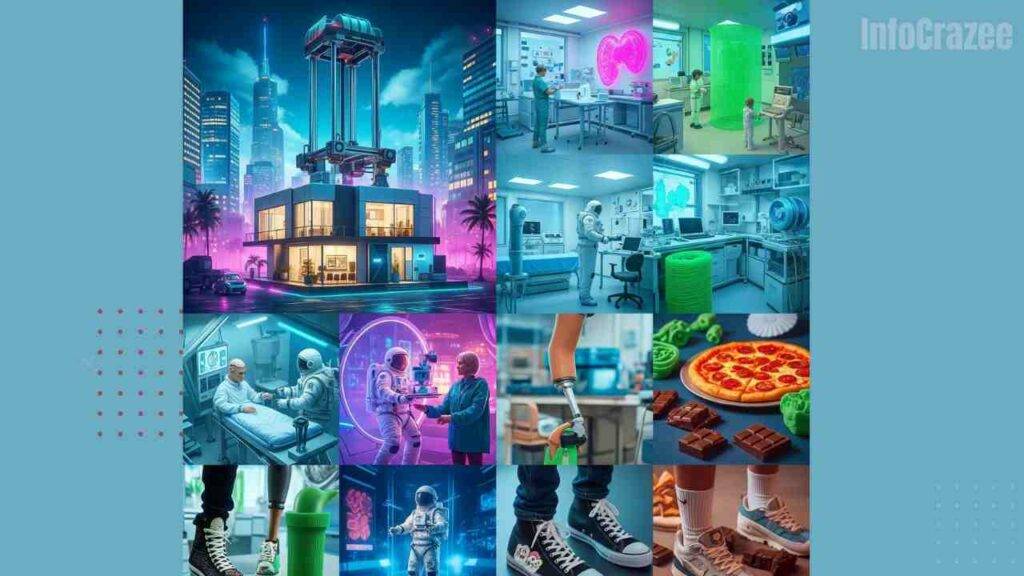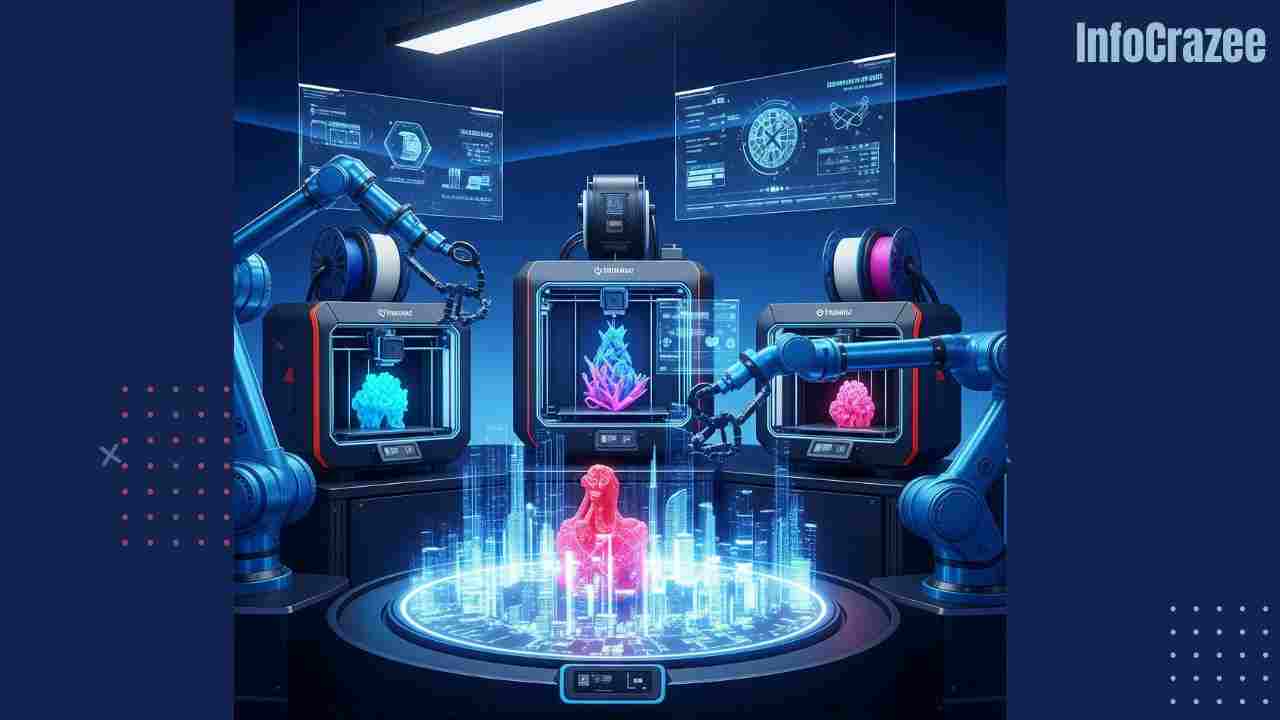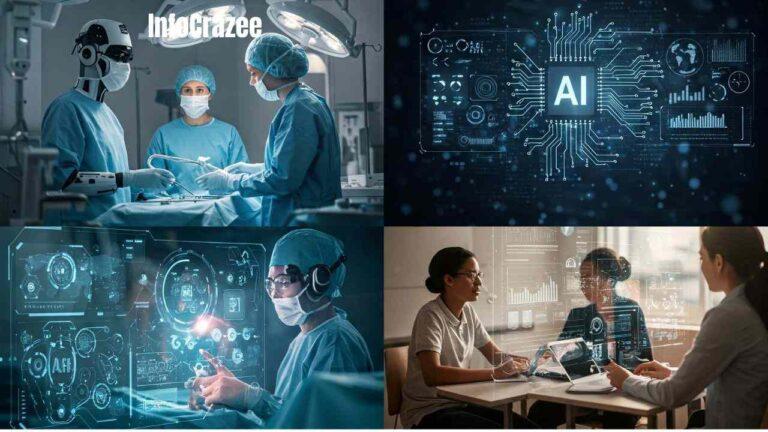What’s Next for 3D Printing? Exploring the Future of This Game-Changing Tech
A few years ago, the idea of printing real objects—like toys, tools, or even food—sounded like something out of science fiction. Now? 3D printing is very real, and it’s getting better, faster, and more exciting every day.
If you think 3D printing is only for tech geeks or big factories, think again. It’s showing up in schools, homes, hospitals, and even on space missions. But the big question is: what’s next? Where is this amazing technology headed?
A Quick Refresher: What Is 3D Printing?
Before we jump into the future, here’s a simple way to think about it.
3D printing is kind of like building something with a glue gun or icing a cake. A machine takes a material—like plastic, metal, or even chocolate—and lays it down layer by layer until a full object is formed. You just need a digital design, and the printer does the rest.
Where We Are Now
Right now, 3D printing is already being used in some super cool ways:
- Making custom tools and parts in factories
- Creating dental molds and hearing aids in healthcare
- Building prototypes quickly in design and engineering
- Helping teachers print models for science and art classes
- Allowing hobbyists to print toys, gadgets, or home repairs
But this is just the beginning. What’s coming next is even more exciting—and way more useful.
What’s Coming: The Future of 3D Printing

1. Printing Houses and Buildings
Yes, really. Entire homes are now being printed using huge 3D printers and concrete-like material. These houses can be built faster and cheaper, which is a big deal for places that need affordable housing.
Real example: In Mexico, a project is building 3D-printed homes for low-income families in just 24 hours per home.
2. 3D Printing in Healthcare
The future of medicine is getting a big boost from 3D printing. Imagine:
- Custom-made prosthetics designed to fit a person perfectly
- 3D-printed organs like livers or kidneys (scientists are working on this!)
- Skin printing to help with burn recovery
This could change lives—especially for people who can’t afford traditional treatments.
3. Printing in Space
NASA is testing 3D printers on the International Space Station. Why? Because it’s much easier to print tools or parts in space than send them from Earth. This is especially important for future Mars missions, where resources will be limited.
4. Personalized Products
You might soon be able to order shoes, glasses, or headphones that are printed just for you—perfect size, perfect shape, perfect fit.
Even food printing is on the rise. Chefs and scientists are experimenting with 3D-printed pizza, chocolate, and even meat. Imagine printing your own snacks at home!
5. Eco-Friendly Materials
One of the best parts of 3D printing is its potential to reduce waste. Traditional manufacturing often cuts away material, but 3D printing builds up, which means less leftover scrap.
In the future, expect more biodegradable and recycled materials being used in printers—including plastics made from plants or ocean waste.
What This Means for You
Here’s how this tech could actually help you in the near future:

Save Money and Time
Need a missing piece for your kitchen drawer? Instead of ordering online and waiting, you could print it yourself.
Learn New Skills
3D printing is a fun way to explore creativity, whether you’re a student, a parent, or just curious. There are tons of free designs online and affordable printers to get started.
Run a Small Business
You could start selling personalized items—like keychains, mini planters, or jewelry—right from your home. It’s a great way to turn a hobby into income.
Support Sustainability
Buying fewer mass-produced items and printing what you need means less shipping, less packaging, and less waste.
Is It Easy to Get Started?
Absolutely. Entry-level 3D printers are more affordable than ever, and many of them are easy to use with beginner-friendly software. There are even community makerspaces where you can try one out without buying your own.
Just start small—maybe with a phone stand or a cookie cutter—and go from there.
Final Thoughts
3D printing isn’t just a fancy tool for engineers anymore. It’s becoming a smart, fun, and even eco-friendly part of everyday life. Whether it’s printing a toothbrush holder at home, a new part for your car, or even helping build a house—this tech is full of possibilities.
So if you’ve ever been curious, now might be the perfect time to dive in. Who knows? Your next favorite thing could come from your own printer.
What You Can Do Next:
- Check out beginner-friendly 3D printers like Creality Ender or Anycubic.
- Explore websites like Thingiverse.com for free designs.
- Join local maker clubs or online forums to ask questions and share tips.
FAQs
Q1: Is 3D printing safe for home use?
Yes, most home 3D printers are safe, especially if used in a well-ventilated space. Just follow the instructions, and you’ll be fine. Some materials may give off a smell when heated, so good airflow helps.
Q2: How much does a 3D printer cost?
Prices vary, but you can find basic models for around $150–$300. As you get more advanced, the cost can go up, but it’s totally possible to get started on a budget.
Q3: What materials can I use to print?
The most common material for beginners is PLA, a plant-based plastic that’s easy to use and eco-friendly. There’s also ABS (more durable), PETG (food-safe), and even wood or metal blends for special projects.
Have you tried 3D printing yet? Or are you just getting curious about it now? Let us know in the comments at Infocrazee—we’d love to hear what you’re excited to create!






